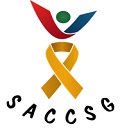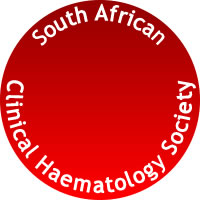Original Research
Malignant peripheral nerve sheath tumours and neurofibromatosis 1: A case series and recommendations for care
Submitted: 05 June 2018 | Published: 20 August 2018
About the author(s)
Henriette Burger, Division of Radiation Oncology, Department of Medical Imaging and Clinical Oncology, Stellenbosch University, South Africa; Division of Radiation Oncology, Tygerberg Hospital, South AfricaHeidre Bezuidenhout, Division of Molecular Biology and Human Genetics, Department of Biomedical Sciences, Stellenbosch University, South Africa; Division of Clinical Genetics, Tygerberg Hospital, South Africa
Candice Sher-Locketz, Division of Anatomical Pathology, National Health Laboratory Service, South Africa
Karin Baatjes, Division of Molecular Biology and Human Genetics, Department of Biomedical Sciences, Stellenbosch University, South Africa; Division of General Surgery, Department of Surgical Sciences, Tygerberg Hospital, South Africa
Jacques van Wyk, Division of Dermatology, Department of Medicine, Stellenbosch University, South Africa; Division of Dermatology, Tygerberg Hospital, South Africa
Anita Bonthuys, Isimo Health, Cape Town, South Africa
Abstract
Background: The incidence of malignant peripheral nerve sheath tumours (MPNST) in patients with neurofibromatosis 1 (NF1) is significantly higher than that of the general population. NF1-associated MPNST occur at a younger age and carry a worse prognosis than sporadic MPNST.
Aim: This case series describes four cases of MPNST in patients with NF1.
Setting: The study was performed in a public academic hospital in the Western Cape province of South Africa.
Method: Demographics, disease status, histopathology, treatment and outcome data were collected retrospectively from medical charts and through review of histological slides.
Results: The median age was 36.5 years. All tumours were > 5 cm at presentation and located on the trunk. One patient presented with metastatic disease. There was a mean delay of 3.5 months from presentation to initiation of treatment. Three patients underwent wide excision, with one receiving adjuvant chemotherapy and radiotherapy. At a median follow-up of 20 months from histological diagnosis only one patient was alive in clinical remission. Two patients had succumbed to progressive disease at 8 and 16 months from diagnosis and one patient with terminal metastatic disease was lost to follow-up.
Conclusion: In this series the patients presented with advanced, often unresectable lesions for which single modality therapy was not curative. An adult NF1 health surveillance guideline for resource-constrained environments could lead to early diagnosis and treatment of MPNST and other complications in NF1 patients.
Keywords
Metrics
Total abstract views: 3193Total article views: 4134



